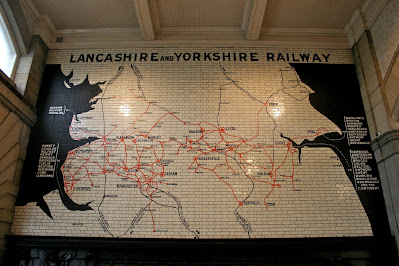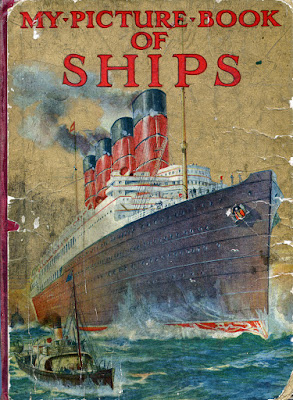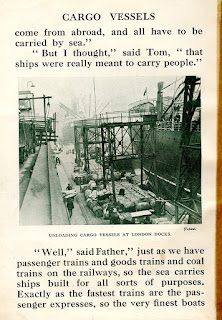When I describe myself as working class, it irritates my wife and family no end.
“Don’t be ridiculous,” they say. “You had professional jobs in accountancy, computing, and universities. Your father employed fifteen people, and owned a four-bedroomed detached house with a double garage and garden in a nice part of town. He had a good car. You had books and music at home. How can that be working class?”
I protest that much of that came later, but they won’t have it and excited voices are raised. They don’t like the idea that if I am working class, it might make them working class too.
“I would not have married you if you had been working class,” my wife once said.
No, we are not working class now. The kids were embarrassed at school to be called “posh” because they did not have particularly strong local accents. But I grew up working class.
Like many of my age and background, especially from the North of England, I have been on a kind of class journey, and changed. It was not a deliberate or conscious change, but without it, I would not have been able to do the things I did. Class was, and to a large extent remains, a big influence on opportunity in England today. We make scores of micro-judgements about each other’s backgrounds all the time, and treat each other accordingly. It influences whether or not we are offered a particular job or promotion, or who we select as friends or partners.
 |
| The street where we lived until I was 6, although it seemed shabbier then |
It is largely the circumstances of your childhood that define you: how you lived and the friends you had. We lived in a rented two-bedroomed terraced house until I was six, and then moved up in the world to a three-bedroomed semi. My dad worked as part shot assistant, and part salesman travelling around the local villages three days a week. Some days he was not home until seven or eight. On Thursday mornings (half-day closing) he went to work in a boiler suit to clean and maintain the firm’s four vehicles, which took a lot of time in the forties and fifties. He worked on Saturdays and had only two week’s holiday a year.
Like many ‘housewives’, my mother did not work. Ordinary jobs paid enough to bring up a family quite comfortably on one income in those days. Work was social, without the intensity it can now have.
 |
| We then lived in one of the semi-detached houses on the left until I was 18 |
It might be more accurate to say we were well-brought-up working class. We did not rent a council house, and my dad was not a manual worker. He took over the business when I was 12, but we did not move to the larger house until a few months before I left school. I never really lived there. I moved on to shared houses in Leeds with ordinary lads from ordinary parts of Wakefield and Manchester.
Let me list how the fathers of my schoolday friends earned their livings: dock worker, railway labourer, engine driver, joiner, council lorry driver, gas meter reader, clothing factory worker, scaffolder, stone mason. They were the children I mixed and played with, and was influenced by. Many lived in council or rented housing. A little above were a butcher with his own shop, a chiropodist, an electricity board clerk, and a man who selected ships’ crew, but it was a working class area in a northern working class town. We used local pronunciations such as “watter” (water), “owt” and “mowt” (anything and nothing), “whee-ere” and “thee-ere” (where and there), and “moo-ere” (more). I knew the difference, but did not mix with any children from professional families except, in my late teens, one whose parents were teachers. Some years later, I felt perfectly at home working in a canning factory.
A few years ago, I came across an old cassette tape recorded at a friend’s house when I was around 17. We switched on the recorder and let it run: five of us I think. The accents, the bad language, how we spoke about girls at school: you would be in no doubt that we were uncouth working class. It made me so uncomfortable I threw the tape away.
 |
| We moved to a large house in this (then) leafy part of town when I was 18 |
 |
Although I soon moved to shared houses in Leeds.
The first was a wrong-way-round house, with entrance at what was built as the rear.
The front entrance was only on foot. |
But I am speaking about the economic working class. There are other indicators. Culturally, we were not typical. My dad had educated interests. He read a lot, listened to the BBC Home Service (now Radio 4), and liked poetry. He was a churchgoer, and followed up the monthly Bible Readings they sent. We had encyclopaedias and books, and my dad talked to me about them, and I read them. He involved me in his Thursday jobs around the house, such as maintaining bicycles and cleaning boots, and interested me in things around town such as ships in the docks, the railways, and the shipyard. I had hobbies and used the public library a lot. I had good general knowledge.
Mum also read a lot, and was in a drama group. Although she was clever, and could have gone to the Grammar School, she chose to stay at her village school and left at fourteen. She helped in her mother’s grocery shop until she married, where they provided tea (i.e. an evening meal) for my father’s travellers out late on their rounds.
I think this background helped get me into the Grammar School where I had a good education and intelligent friends. The Grammar Schools were created to supply the country’s need for educated professionals: social engineering on a grand scale. It took me into the accountancy profession, and contact with privately educated colleagues and business owners. We had to get on with everyone from office and factory workers to the rich. My accent began to shift, my language became more elaborate, and I began to understand how the world worked.
Going late to university and working in higher education around the country brought further sophistications. My accent still reveals my Yorkshire roots, and some even detect which part of Yorkshire, but it is unsettling to encounter those who never moved away, and realise just how different I am now. They often sound uneducated.
Do genetics influence class? How did my great-grandfather lift himself from a background of agricultural labourers to become a ship’s master after running away to sea? And my grandfather successfully started his own business, and employed others. Another great-grandfather was active in the Methodist church, with wide religious knowledge. My mother’s father worked in a paper mill, but his family had (and still has) an almost innate understanding of all things mechanicals. They can mend almost anything. These things run through families for generations, although the genetic elements no doubt interact with other factors in complex ways.
Perhaps class differences are no longer what they were, but they are still there in the background. It shows in what you do, your interests, how you spend your time, your friends, the language you use, how much wealth you have, and many other things. The private education sector perpetuates class differences by handing more opportunities to those whose families have paid the enormous fees. I don’t want to make “chip-on-the-shoulder” excuses, but my culturally rich family background is nothing compared to the advantages some have.
I did all right in the end, and it has been mainly down to merit. Some academic achievements cannot be bought. I hope that is not being smug. Although selection was not entirely unbiased, I regret the abolition of the state Grammar Schools and the social mobility they gave to so many from ordinary backgrounds like mine.







.jpg)













































